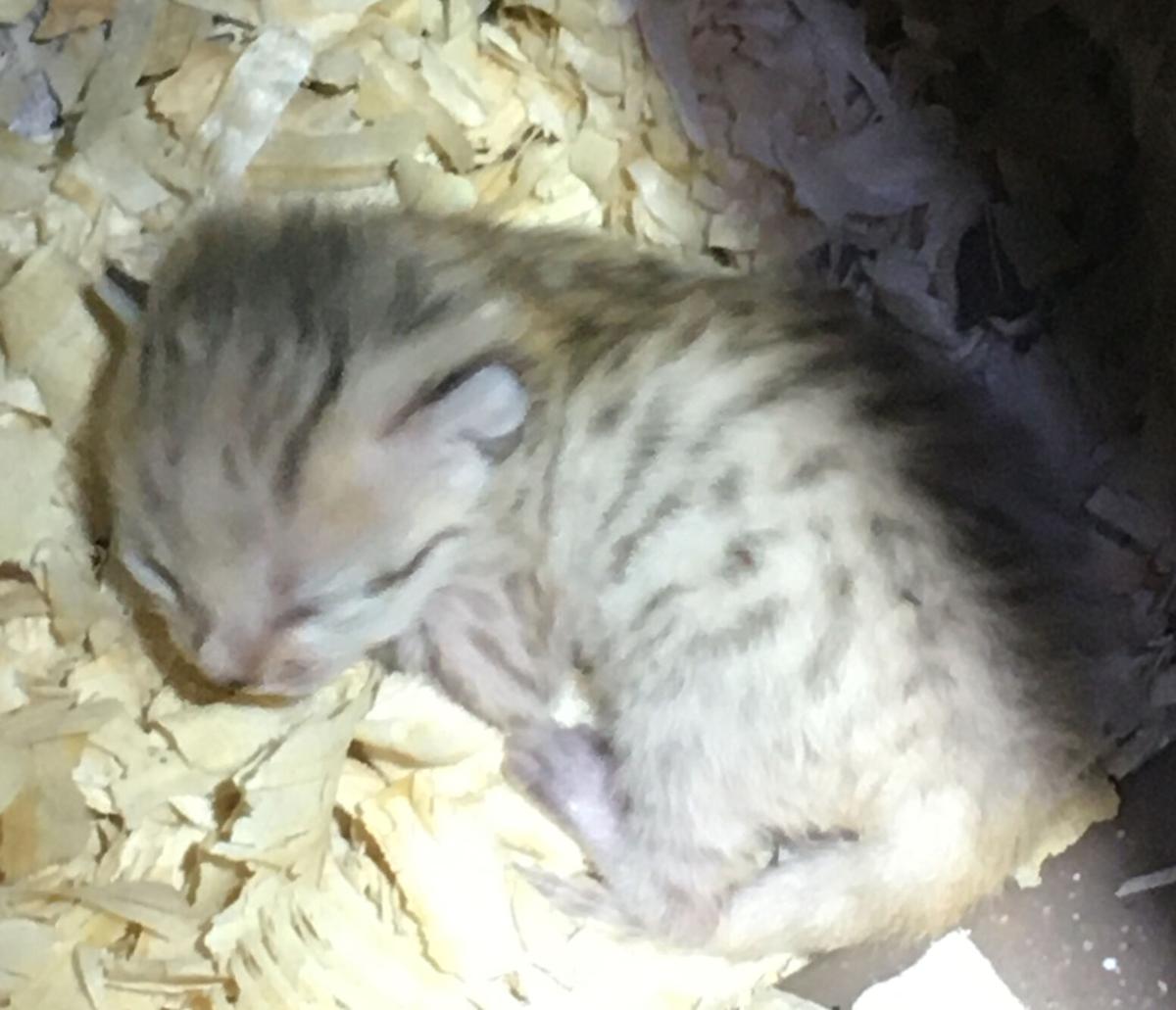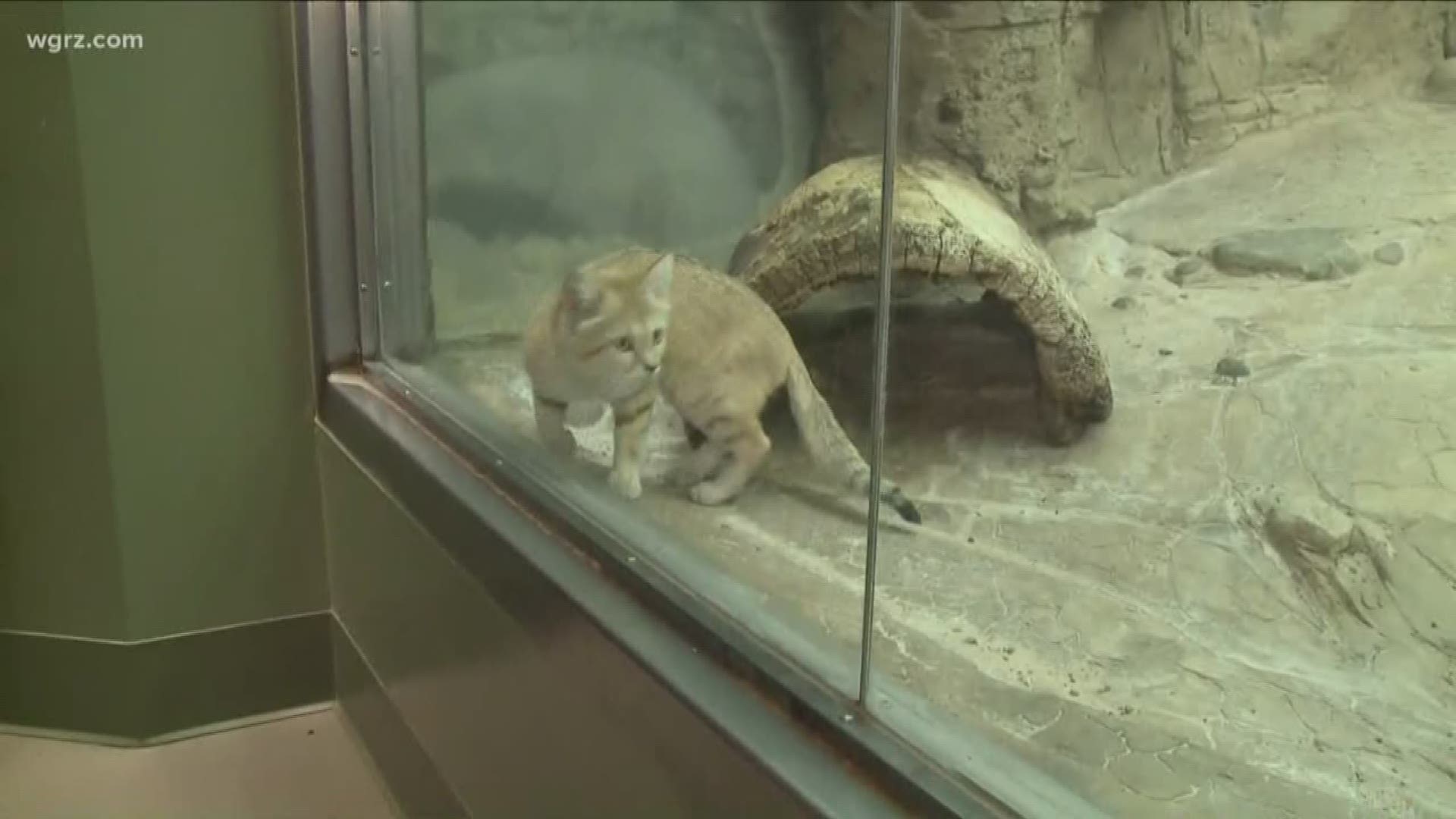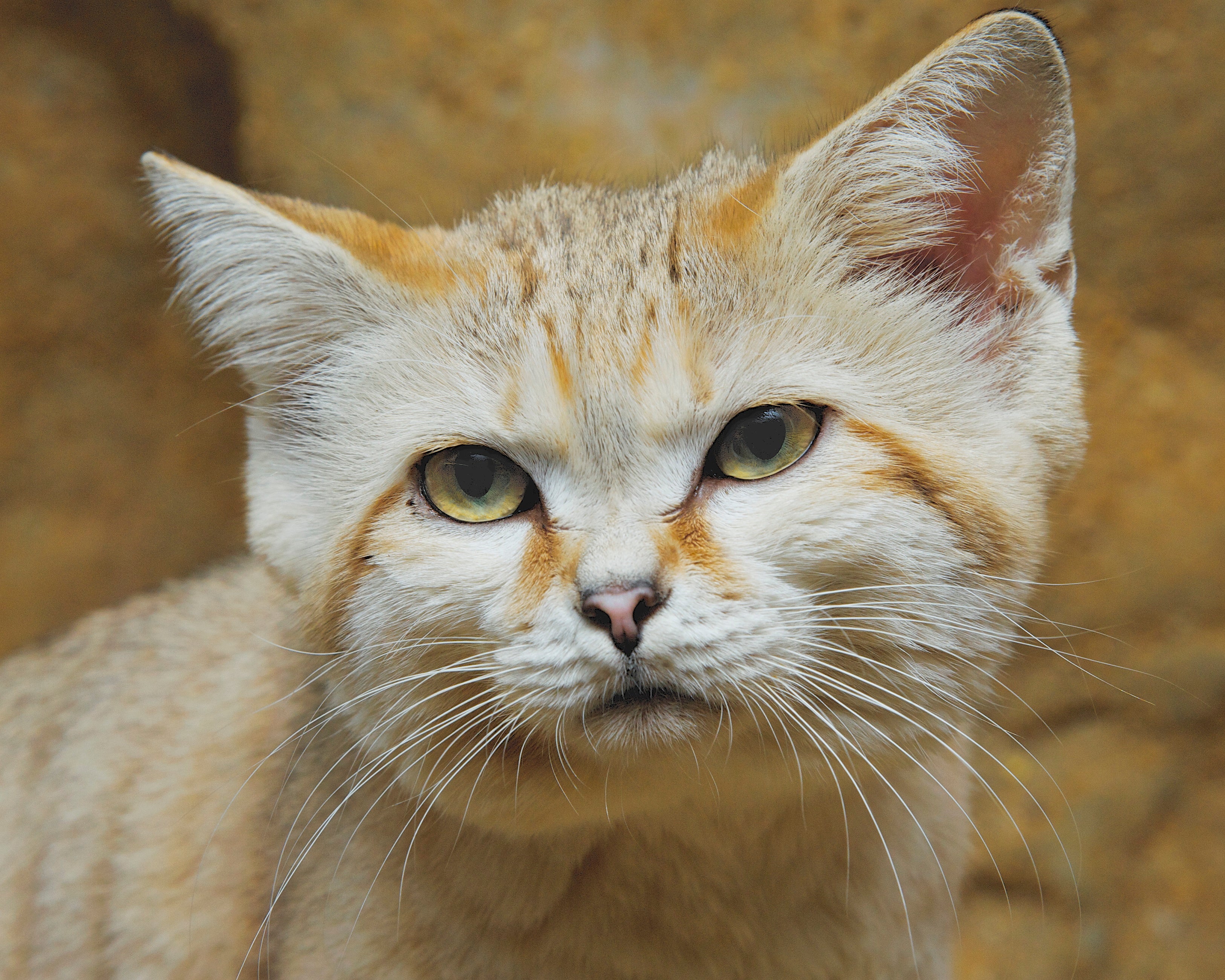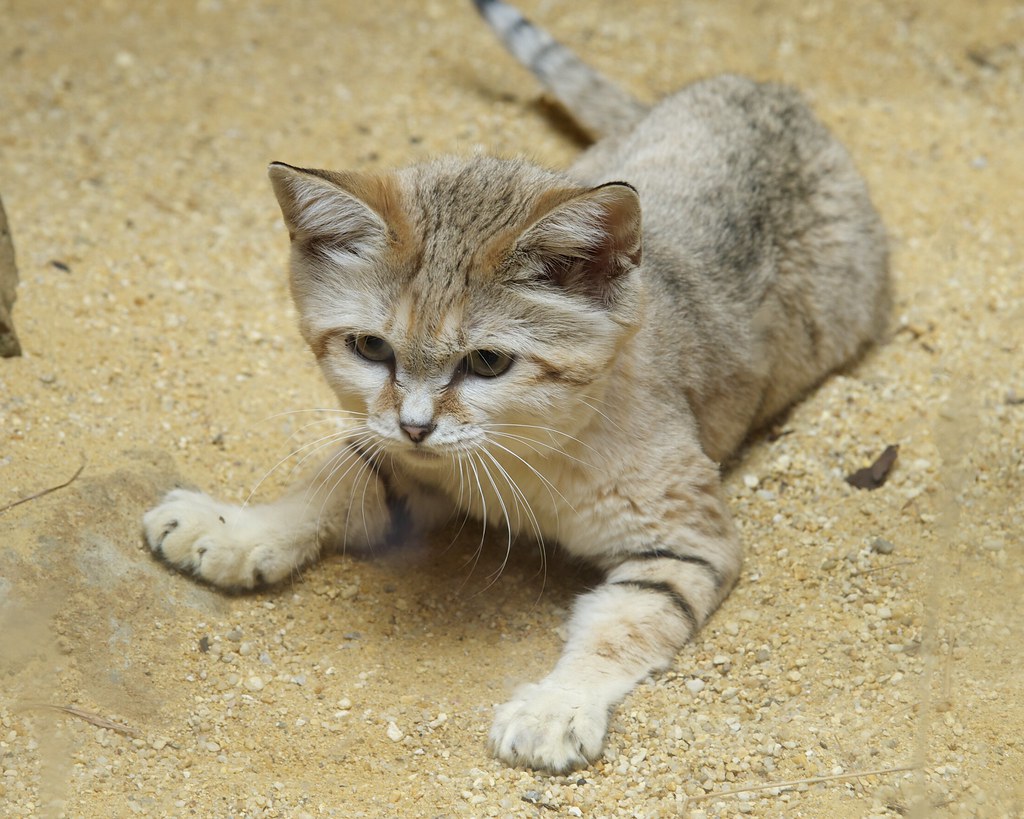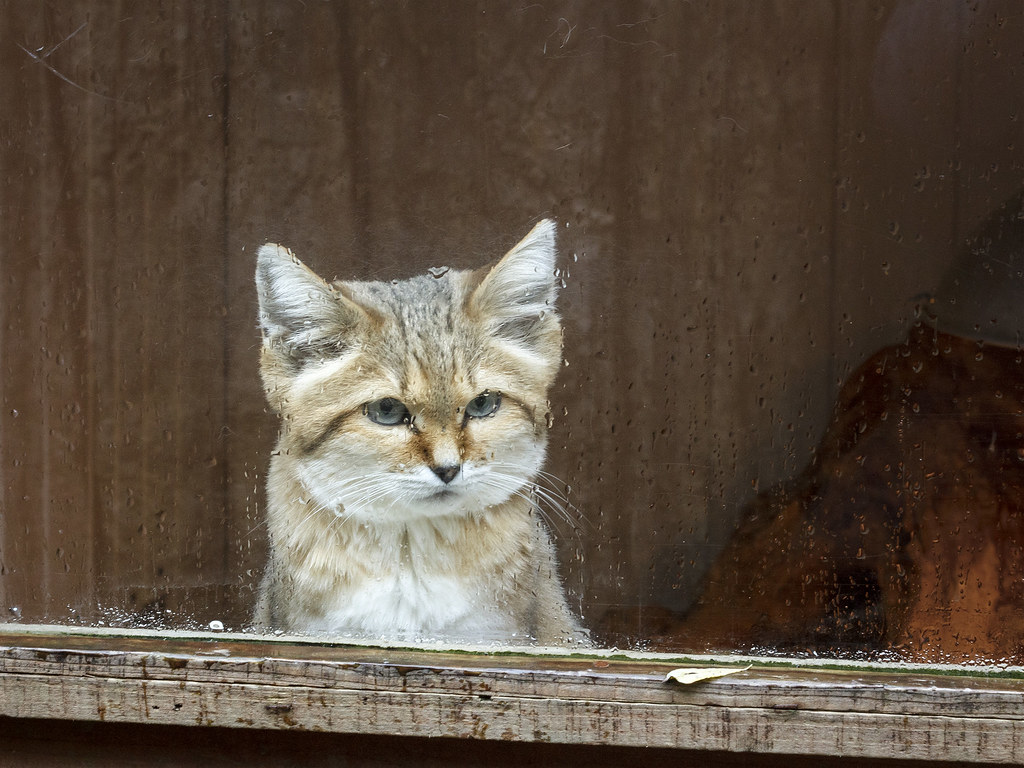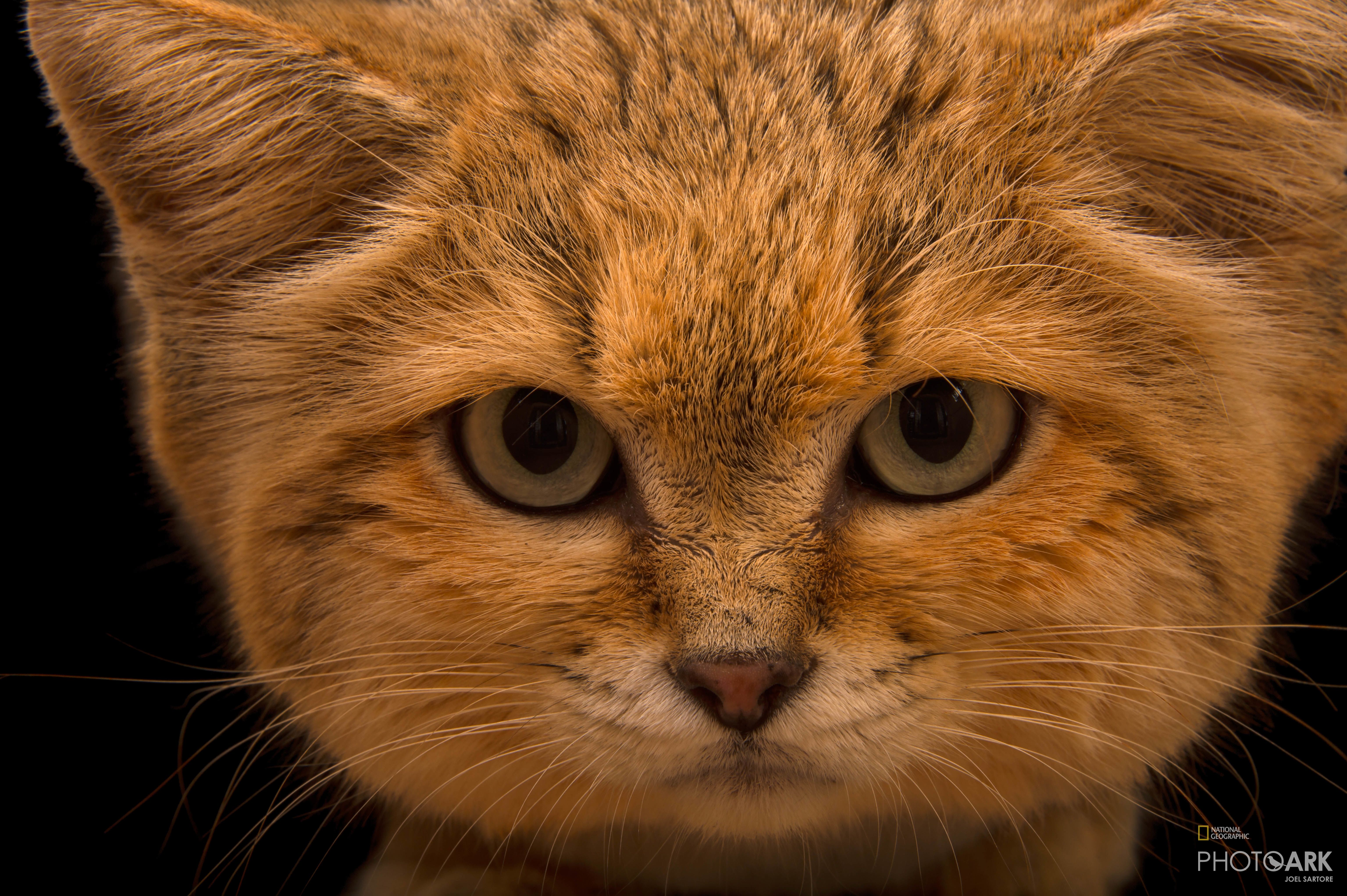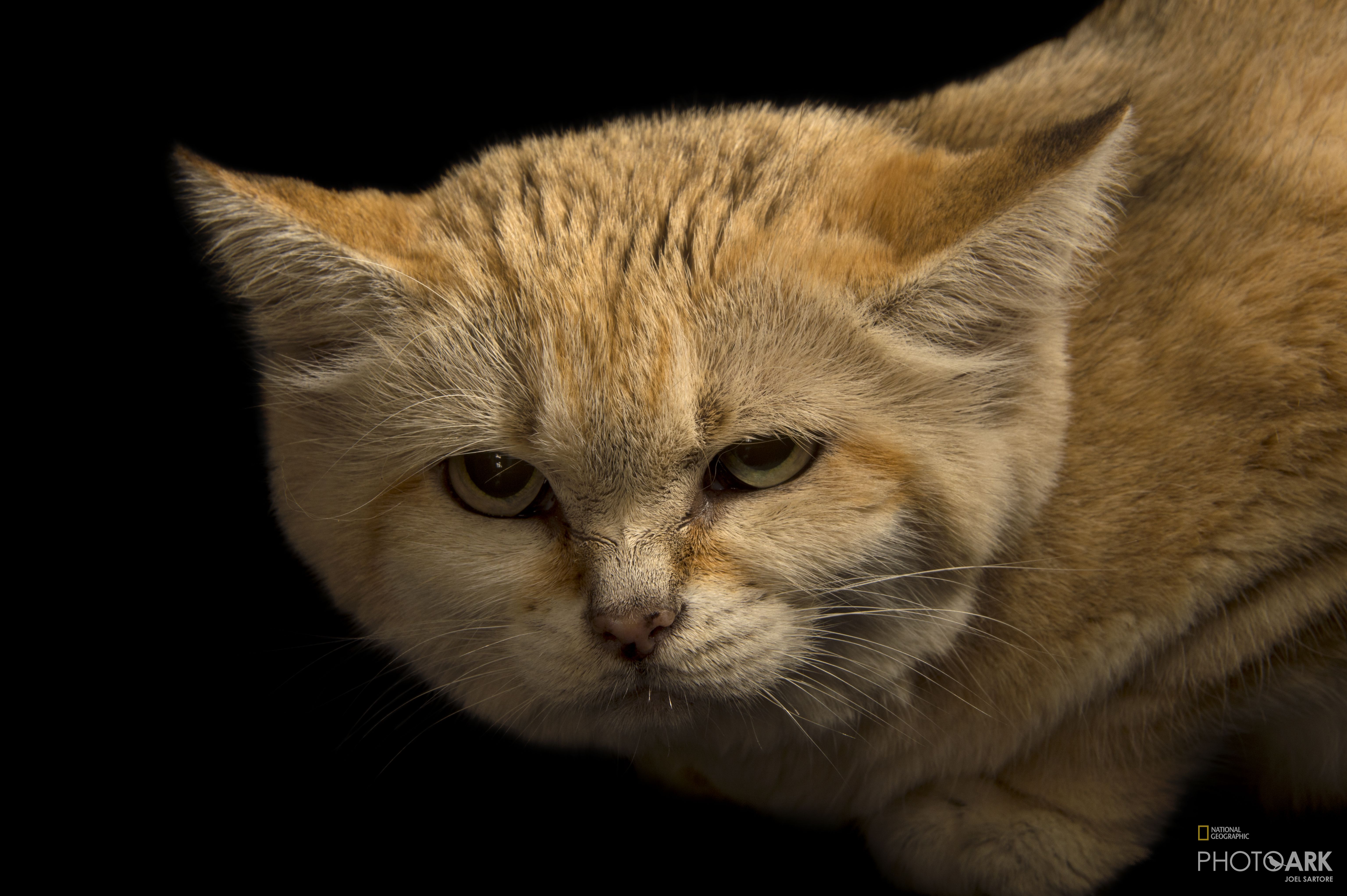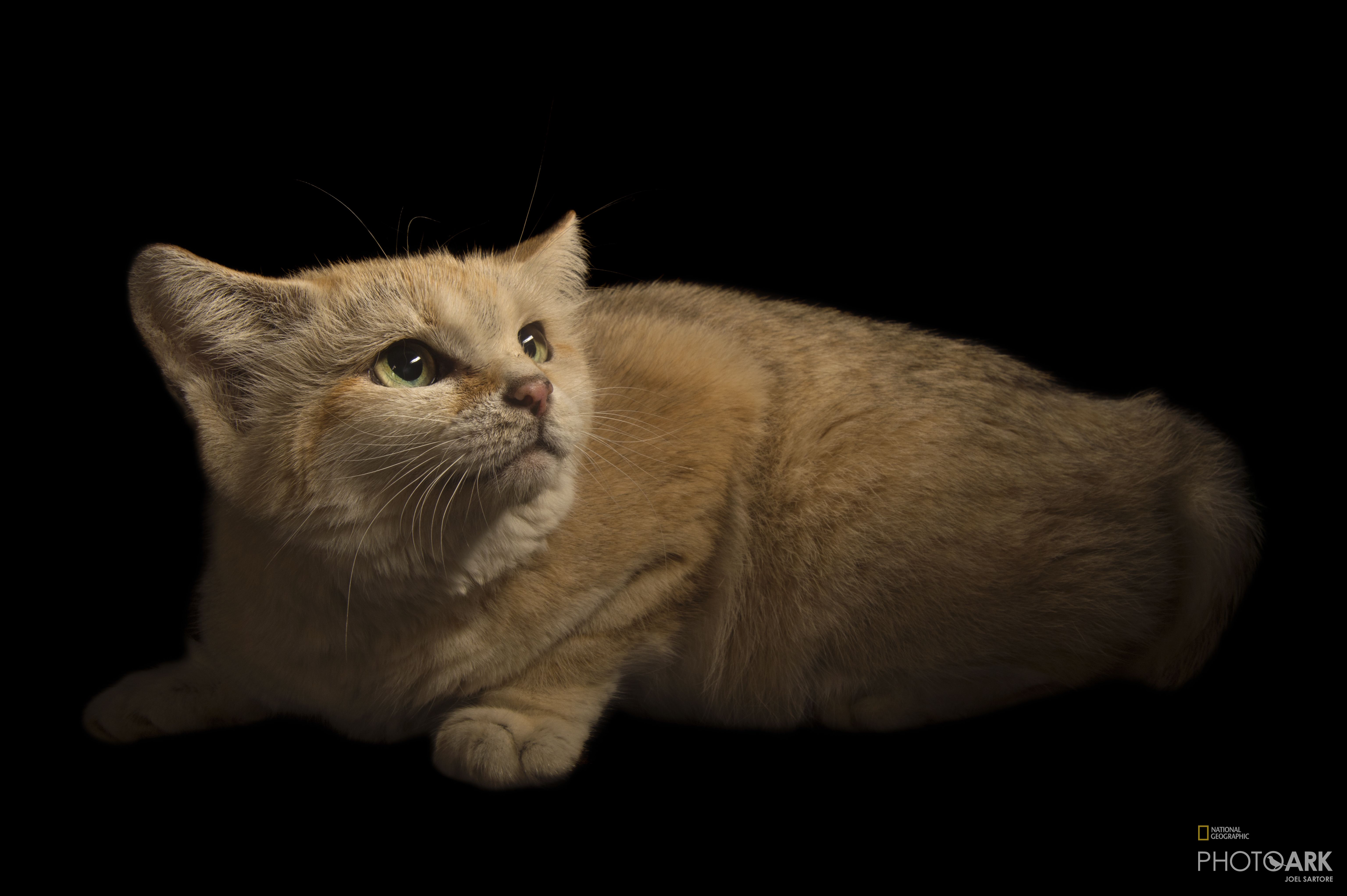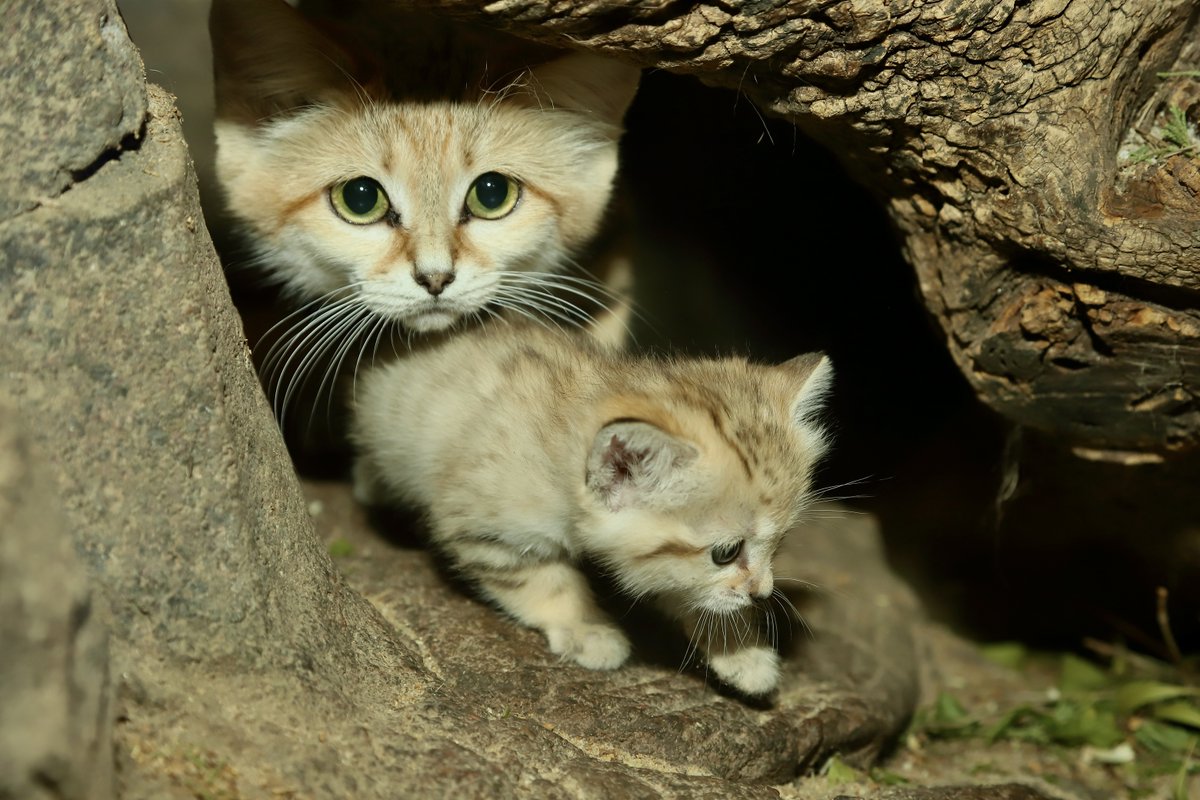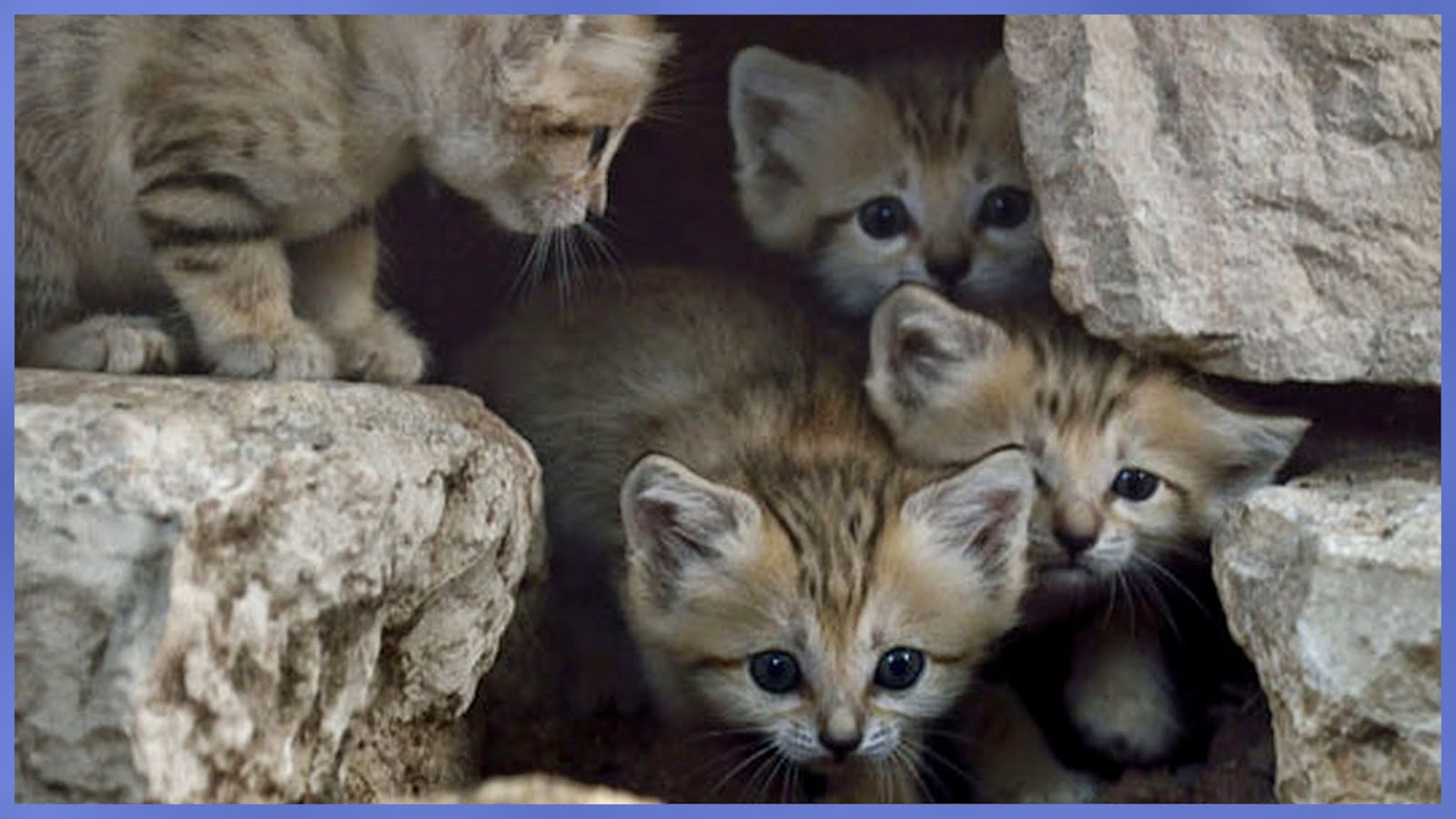Sand Cats Zoo Habitat

Sand cats can sometimes go months without drinking.
Sand cats zoo habitat. The cats large ears help to provide it with excellent hearing. Sand cats live in three distinct regions of the world. Sand Cat Felis margarita Cats Mammals.
Not in cages in zoos and with sick people that want a different kind of pet than the neighbor has. The Sand Cat Felis margarita is one of the few wild cat species occurring in very dry desert habitat. Vulnerable arid ecosystems are being rapidly degraded by human settlement and activity especially livestock grazing Allan and Warren 1993 Al-Sharhan et al.
To transition zoo-raised animals back to the wild. The sand cat is equipped for desert life. Highlights Sand cats have an exceptionally large middle ear cavity making them extremely sensitive to the small scratching sounds of burrowing rodents as well as large ears that can swivel and funnel sounds to the inner ear.
Deserts to semi-desert areas. Conditions are extreme in the desert and temperatures can reach 124º F during the day and 31º F at night. Sand cats are native to the deserts of North Africa and the Arabian Peninsula.
Habitat degradation is the major threat to the sand cat. May meow like domestic cats and use a bark-like call during breeding season. During extreme heat the sand cat cools off in a burrow.
Sand cats are the Peter Pan of felines. The International Union for Conservation of Nature considers sand cats to be near threatened. The kitten small enough to fit into a teacup was born to mother.

